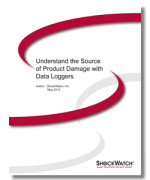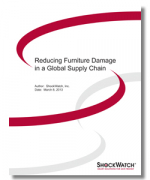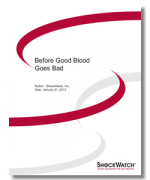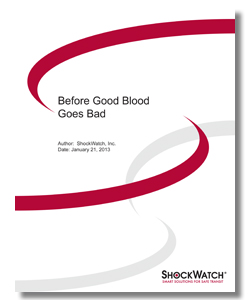Monitoring system that ensure quality handling approach to of blood and blood products
In the United States each year, nearly 11 million volunteers donate some 17 million units of whole blood and red blood cells, but much of that safe, transfuseable blood – about 2 percent – is discarded.
The blood supply itself is not steady. It peaks in spring and autumn in the United States, and varies regionally according to holidays, weather and the outbreak of illnesses, such as flu epidemics. In the UK, for example, there were 851 fewer donations on one day in 2011 than on the same day the previous year because of a combination of warm, sunny weather, the World Cup quarter finals, and Wimbledon play. The peaks in supplies and in shelf life can be flattened somewhat with proper temperature maintenance that helps blood and blood products reach their maximize useable lifespans.
Unlike many other healthcare products, blood has a short shelf life. Red blood cells are stable up to 42 days when refrigerated. Individual components separated from whole blood, however, are stable for other periods of time. Platelets may be stored 5 days at room temperature, and one year when frozen. Granulocytes, in contrast, must be transfused within 24 hours of donation. To reduce bacterial contamination, whole blood either must be chilled to 4°C after it is collected and kept at that temperature until it is transfused. The alternative is to add a cryoprotectant (typically glycerol) to the blood and then to freeze that solution.
The challenge in temperature maintenance is that blood is handled many times by multiple entities. It may becollected during a mobile blood drive, stored in a bloodmobile, taken to a blood bank, tested, separated into components, stored, delivered to healthcare facilities, stored, and finally used with patients. An equipment failure at the collection point, centralized blood bank, laboratory, or hospital could render the product unusable and increase the risk that a warm unit may be returned to the refrigerator. Temperature indicators placed on each unit can reduce that risk.
What’s Related



Favorites





